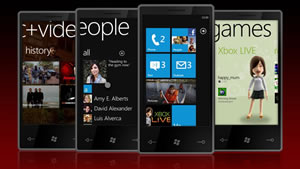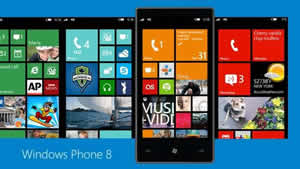Difference between Windows Phone 7 and Windows Phone 8
Key Difference: Windows Phone 7 is not exactly an upgrade of Windows Mobile 6.5; it is a completely revamped and new operating system. Windows Phone 7 is built on a different kernel from the Windows Mobile and is not backward compatible. Windows Phone 7 was quite a step up from the Windows Mobile 6.5 operating system. In addition to changing the looks of the OS, the company also added and removed many features from the older version. Windows Phone 8 is the second generation operating system for the Microsoft’s Windows Phone series. The 8 system uses the same Metro UI as its predecessors. Windows 8 system does not work on Windows 7 architecture.
Windows Phone 7 and Windows Phone 8 are two popular operating systems by Microsoft. The company introduced Windows Phone 7 as a replacement for their old Windows Mobile operating systems and to try and capture back the market they lost to iPhone and Android. The company’s Windows 7 offered a whole new look, feel and great new features. Windows Phone 8 is the latest operating system that is available from the company and has built on the Windows Phone 7 system. Windows Phone 8 is aimed at bridging the gap between Windows 8 and Windows Phone 8. However, the major problem that the company currently faces is the loss of fans from the lack of upgrade capability from Windows Phone 7 to Windows Phone 8. So for fans to get on the Windows 8 action, would have to purchase a brand new phone. For the fans that do not want to splurge on a new phone so soon, the company has also introduced Windows Phone 7.8 upgrade that provides 7 users with some of the many Windows Phone 8 features.
 Windows Phone 7 is not exactly an upgrade of Windows Mobile 6.5; it is a completely revamped and new operating system. The company chose to change its look and offerings in an attempt to make the system popular again with the Windows customers. Windows Phone 7 is built on a different kernel from the Windows Mobile and is not backward compatible, meaning that apps that work on the 7 will not work on the older versions and vice-versa. The operating system was announced at the 2010 Mobile World Congress and was released worldwide on October 21, 2010. The operating system was completely different in terms of aesthetics and offered a whole new UI, named Metro. This update was also the first time the company showed off its Windows Live Tiles that are directly linked to applications and provides updates directly on the Start screen. It also allowed users to input text via an on-screen virtual keyboard. The 7.5 update introduced thread system messaging, People hub, New IE 9 web browser, and support for Hotmail, Exchange, Yahoo! Mail and Gmail. Windows Phone 7 also offered a new multimedia platform (Music + Videos hub), Games hub, search engine, Microsoft Office Mobile, multitasking capabilities and sync capabilities.
Windows Phone 7 is not exactly an upgrade of Windows Mobile 6.5; it is a completely revamped and new operating system. The company chose to change its look and offerings in an attempt to make the system popular again with the Windows customers. Windows Phone 7 is built on a different kernel from the Windows Mobile and is not backward compatible, meaning that apps that work on the 7 will not work on the older versions and vice-versa. The operating system was announced at the 2010 Mobile World Congress and was released worldwide on October 21, 2010. The operating system was completely different in terms of aesthetics and offered a whole new UI, named Metro. This update was also the first time the company showed off its Windows Live Tiles that are directly linked to applications and provides updates directly on the Start screen. It also allowed users to input text via an on-screen virtual keyboard. The 7.5 update introduced thread system messaging, People hub, New IE 9 web browser, and support for Hotmail, Exchange, Yahoo! Mail and Gmail. Windows Phone 7 also offered a new multimedia platform (Music + Videos hub), Games hub, search engine, Microsoft Office Mobile, multitasking capabilities and sync capabilities.
 Windows Phone 8 is the second generation operating system for the Microsoft’s Windows Phone series. The Windows Phone 8 was announced earlier in 2012 and was also slated for release later in the same year. The operating system uses the same Metro UI as its predecessors. Windows 8 system does not work on Windows 7 architecture, which means Windows Phone 7 users would not be able to upgrade to Windows 8. However, the system is backward compatible with the Windows 7 apps. The only way to get a Windows Phone 8 would be to buy a new phone. This is mainly due to the company scrapping the Windows CE-based architecture in favor of the Windows NT kernel that is found on many Windows 8 components, making it easier for developers to port components between the two platforms. Windows Phone 8 works with larger screens and multi-core processors, NFC, improved support for removable storage, redesigned home screen that allows resizing tiles according to importance, new Wallet Hub, Kid’s Corner. Windows 8 also incorporates features that are aimed at the enterprise market. Windows 8 will also support over-the-air updates. A list of all the latest features can be found on the company’s website.
Windows Phone 8 is the second generation operating system for the Microsoft’s Windows Phone series. The Windows Phone 8 was announced earlier in 2012 and was also slated for release later in the same year. The operating system uses the same Metro UI as its predecessors. Windows 8 system does not work on Windows 7 architecture, which means Windows Phone 7 users would not be able to upgrade to Windows 8. However, the system is backward compatible with the Windows 7 apps. The only way to get a Windows Phone 8 would be to buy a new phone. This is mainly due to the company scrapping the Windows CE-based architecture in favor of the Windows NT kernel that is found on many Windows 8 components, making it easier for developers to port components between the two platforms. Windows Phone 8 works with larger screens and multi-core processors, NFC, improved support for removable storage, redesigned home screen that allows resizing tiles according to importance, new Wallet Hub, Kid’s Corner. Windows 8 also incorporates features that are aimed at the enterprise market. Windows 8 will also support over-the-air updates. A list of all the latest features can be found on the company’s website.
Windows Phone 7 and Windows Phone 8 are actually quite similar with Windows Phone 8 being an upgraded version of Windows Phone 7. However, certain features that Windows Phone 7 lacks include multi-core processor support, bigger/sharper screens, tow new resolutions 1280x768 and 1280x720, microSD card support, NFC sharing, Internet Explorer 10, Flash support, more security features, resizable Live Tiles, Wallet Hub, Kid’s Corner, improved Maps with storing offline option, higher security options for social networking profiles, third-party application support, voice powered e-mails. Windows Phone 8 also loses the negative black strip on the phone screen that is visible in Windows Phone 7. Another loss in Windows Phone 8 is radio, as the company removes radio from the new devices.
Image Courtesy: heavy.com, digitaltrends.com









Add new comment